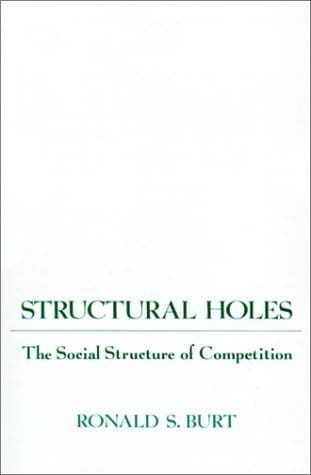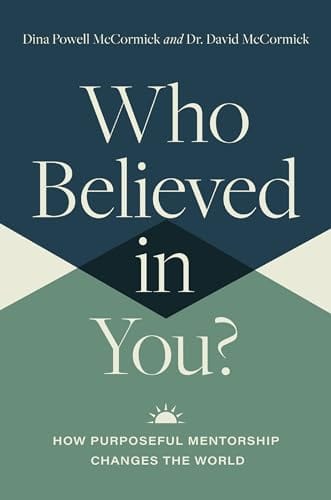Breaking the Cartel: Mentorship as a Trust Strategy
Some leadership teams operate like cartels—exclusive and self-reinforcing. This post explores how mentorship can dismantle these echo chambers, rebuild trust, and create leadership cultures that bridge divides and connect across structural holes.

In my previous post, A Business Case for Empathetic Leadership, I explored a quiet crisis unfolding in some organisations: the narrowing of leadership vision in the name of efficiency and control. Phrases like “streamlined decision-making” or “cost-cutting measures” often obscure deeper trade-offs—where complexity is avoided for comfort, and diversity of thought is sacrificed for superficial cohesion. Leadership is becoming increasingly insular, with power concentrated in tight, familiar circles. As these close in, opportunities for innovation, challenge, and renewal begin to diminish.
This trend is especially troubling amid a wider rollback of DEI initiatives where inclusion is increasingly treated as optional rather than essential. The long-term consequences are harder to ignore: diminished adaptability, hardened hierarchies, and leadership that no longer reflects the diversity of those it serves.
At the heart of this shift is a deeper structural pattern—one where influence is hoarded, opportunities are tightly controlled, and access to leadership is confined to the familiar. This dynamic is what this post refers to as cartelisation.
Borrowed from economic theory, cartelisation describes collusion among actors to control markets or prices. In organisational life, a similar logic applies—not over goods, but over power. Leadership becomes concentrated, perspectives narrow, and dissent is quietly designed out of the system.
Though cartel-like behaviour may offer the illusion of unity and stability, it comes at a steep cost. These environments forfeit the richness that comes from engaging across functions, generations, cultures, and disciplines. Built on sameness and exclusion, they suppress dissent and favour loyalty over learning. And in doing so, they erode the organisation’s ability to respond to change, engage meaningfully, or evolve with relevance.
Cartelisation, then, is not merely a leadership flaw. It is a governance hazard.
This post explores that hazard in three parts. First, it examines how power consolidates in executive teams, reinforcing echo chambers and blocking renewal. Second, it connects this pattern to a broader societal decline in trust and connection—what Timothy Carney calls a “recession of social capital.” Finally, it proposes a countermeasure rooted not in policy or structural reform, but in the form of practice: mentorship.
Mentorship, when intentional and purpose-driven, doesn’t just dismantle cartels, it prevents them from forming. It builds openness before exclusion can take root. It forges values-based relationships that elevate emerging leaders and strengthen the connective tissue of organisations. It transmits wisdom across generations without enforcing sameness. And by doing so, it cultivates leadership pipelines that thrive on difference — safeguarding organisations from stagnation and fragility.
As I wrote in Empathetic Leadership, trust isn’t a sentimental virtue — it’s the currency of leadership. Mentorship is how that trust is earned. In a time of institutional fragility and civic uncertainty, it’s not just a talent strategy — it’s a trust strategy, and one of the most practical, human ways to strengthen organisations from the inside out.
The Cartelisation of the Organisational Mind
In many organisations, leadership is drifting toward insularity. What begins as efficiency quietly hardens into exclusion, as decision-making concentrates in small, familiar circles. Over time, leadership circles become echo chambers: exclusive, self-reinforcing, and risk-averse. These are environments where diversity is unwelcome, novelty is viewed with suspicion, and difference must either conform or be excluded. While these groups may appear stable, they are often brittle, conflating loyalty with alignment and suppressing the tensions that fuel innovation.
Homogeneous teams move fast. Decisions face little resistance. Meetings run smoothly. But that smoothness is deceptive. It masks a steep cost: the erosion of critical thinking, the dilution of creativity, and the slow decay of legitimacy. In cartelised leadership cultures, executives often advance those who “get it” — a euphemism for people who mirror their own thinking, reinforcing sameness and shutting out challenge. Board seats rotate within narrow networks. Dissent fades, not because issues disappear, but because they’re no longer raised.
This is not just a failure of diversity in a demographic sense — though that matters deeply. It’s a failure of cognitive range and institutional courage. Good leadership doesn’t eliminate friction; it embraces it as something to be managed, not erased.
Why does cartelisation take hold? Because difference is difficult. It demands humility, negotiation, and the willingness to sit with discomfort. Cartels offer simplicity. It’s easier to appoint a clone than to cultivate a challenger.
But in today’s world, complexity is not a threat — it’s a given. The organisations that thrive are those that build the capacity to hold and grow through tension. Friction, when engaged constructively, is not dysfunction — it’s the raw material of innovation.
The Erosion of Social Capital
The executive echo chamber is not an isolated organisational issue—it’s a symptom of broader societal erosion. Trust is thinning, institutional loyalty is fraying, and civic engagement is waning. As organisations become more closed and self-reinforcing, they mirror a world increasingly fractured by silos and suspicion.
Political scientist Robert Putnam’s Bowling Alone provides a useful starting point for understanding the problem. He distinguishes between bonding social capital (ties within homogeneous groups) and bridging capital (connections across lines of difference). Bonding fosters loyalty but risks insularity—the very logic of cartelisation. Bridging, by contrast, builds empathy, civic cohesion, and resilience.
Similarly, Ronald Burt’s theory of structural holes reveals the strategic value of individuals who bridge gaps between disconnected groups. These “bridgers” hold informational power and extend organisational reach. Yet leadership development often overlooks them, reinforcing insular hierarchies and missing a vital source of resilience.
Cartelised leadership structures rely heavily on bonding capital and lack the connective threads of bridging capital. They may appear stable, but they are fragile, unable to adapt, respond, or represent. They concentrate power, reward conformity, and hollow out the very trust they depend on.
Mentorship as the Antidote
In Who Believed in You: How Purposeful Mentorship Changes the World, David and Dina Powell McCormick frame mentorship as a solution to this trust crisis. Their message is simple and powerful: “Trust is the glue that holds families, communities, and democracies together and makes a great civilisation possible. It’s under siege, and almost wiped out” (p. 11). Their approach avoids partisanship and zeroes in on leadership through relationship.
Transformative mentorship, in their framing, is not transactional coaching — it’s character-shaping partnership. It cultivates confidence, values, and long-term purpose. Where cartels hoard knowledge, mentorship shares it. Where echo chambers suppress diversity, mentorship creates space for friction, learning, and growth. It is the human mechanism for building bridging capital — connecting across differences, spanning silos, and transmitting institutional memory.
Putnam reminds us: social capital can be rebuilt. The McCormicks show us how: through their four pillars of transformative mentorship — trustworthiness, value transmission, reciprocal investment, and confidence-building. Mentorship, in this light, becomes a deliberate strategy for organisational renewal.
Research supports this. The most desired quality in modern workplaces are not perks or compensation, but compassionate, empathetic leadership and a widespread desire for mentorship (Who Believed in You, McCormick, p. 18). This reflects something deeper: a longing for leadership that sees the whole person, not just the role they fill. Mentorship, at its best, answers that call—not with efficiency, but with presence.
When structured with intent, mentorship becomes a form of connective infrastructure — spanning levels, disciplines, and generations. It enables informal trust and influence to move across organisational boundaries where formal structures often fail.
Forms vary: traditional, reverse, peer, group. But trans-generational bridging mentorship stands out—especially in succession planning. Without it, organisations risk leadership vacuums and legacy loss. As research from Ibarra et al. (Harvard Business Review, 2010) shows, organisations with robust, early-stage mentorship pipelines are better equipped to transition power smoothly.




Selected readings that informed this post
Letting go of power is not just an act of emotional intelligence—it is a governance function. Strong institutions don’t just appoint new leaders—they cultivate them over time. They invest in mentorship not as an act of benevolence, but as a strategic imperative: embedding renewal, resilience, and trust into the organisation’s DNA.
In this sense, mentorship is more than leadership development. It is civic repair.
Conclusion
When leadership becomes insular, innovation stalls. Echo chambers reward loyalty over learning and comfort over challenge. Bonding capital, unchecked by bridging capital, fosters exclusion and weakens adaptability. And in doing so, organisations lose their capacity to evolve.
Cartel-like leadership structures are most effectively dissolved not through disruption, but through the deliberate, distributed sharing of influence over time. Likewise, legacy is not preserved through control, but through investment: in relationships, in capacity, and in continuity. In practical terms, this is how cartels are dismantled: not by confrontation, but by systematic diffusion of influence through bridging mentorship structures. It is also how legacy is secured — not by holding on, but by building capacity and connectivity across generations. Ultimately, this is the most reliable path to durable organisational success: open networks, intentional development, and leadership practices grounded in transparency and trust.
This is where mentorship becomes essential — not as a feel-good initiative, but as a core organisational strategy. It opens doors, shares knowledge, and fosters cultures where nonconformity is welcomed as insight. And just as critically, organisations must retain the leaders they’ve cultivated — providing meaningful pathways for growth and influence. Otherwise, they risk losing not just people, but the future they represent.
In sum, mentorship is not a luxury. It is a strategic, structural imperative. It dismantles informal monopolies, builds social capital across divides, and equips institutions to face complexity with clarity, integrity, and trust.